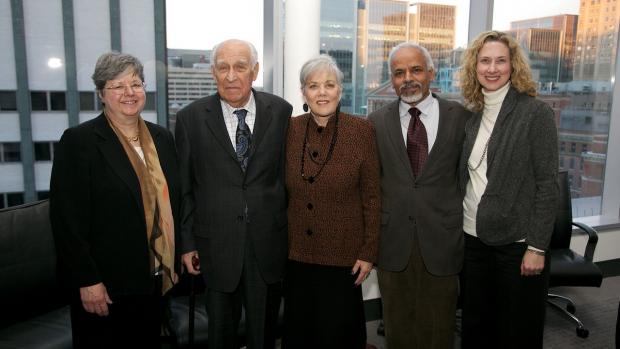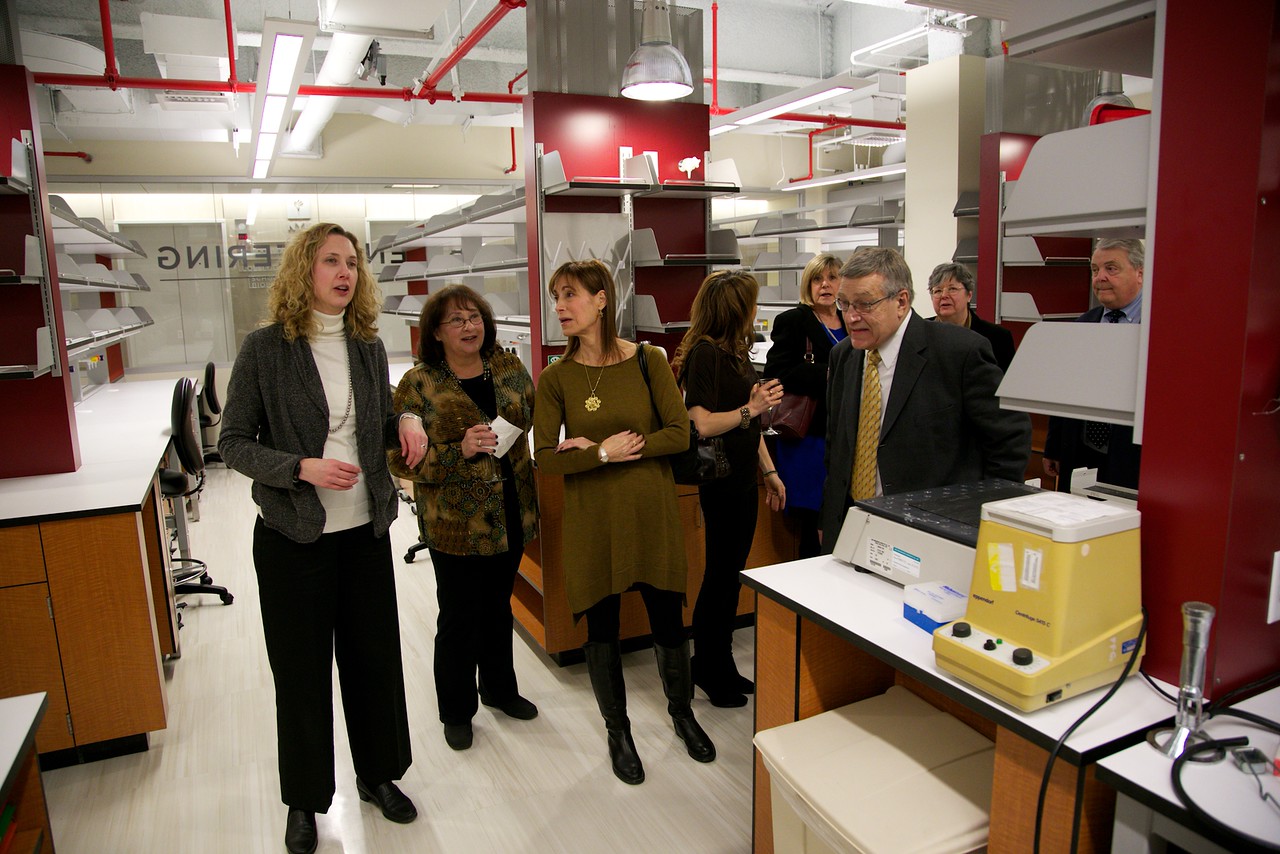NYU New Biomatrix Center's Key to Halting Cancer, Healing Wounds: Hyaluronan

The NYU Polytechnic School of Engineering is now the home of the Biomatrix Research Center, located in a new state-of-the-art facility in Manhattan’s Health Corridor. Thanks to a $4.5 million grant from the Endre A. Balazs Foundation, the Center houses a research group overseen by Mary Cowman, Associate Dean for Bioengineering and Professor of Biochemistry and Bioengineering at the School of Engineering. It also incorporates a research group from the Matrix Biology Institute, which had been founded by Drs. Endre Balazs and Janet Denlinger in their pioneering quest for a better understanding of the molecular structure, function and medical utility of the matrix between and surrounding cells, its regulatory role in cell functions, and its therapeutic potential. The new Center is expected to be the site of much groundbreaking and award-winning work. Many of its scientists will be studying hyaluronan, a unique polysaccharide molecule that is an important component of the vertebrate biomatrix.
 Among the most unusual and eye-catching of all scientific prizes is the china statuette of a rooster that is awarded by the International Society of Hyaluronan Sciences (ISHAS), and it seems likely that some of those working at the Center may one day boast a Rooster Award, as it is called, given to researchers who have made significant contributions to the therapeutic use of the substance, which functions as a natural biosensor that promotes cellular responses to inflammation. (The prize takes that form because at one time extremely pure molecules of hyaluronan for therapeutic use could be prepared only from the combs of roosters.) Hyaluronan had been discovered in the 1930s by a Columbia University researcher who found that it could be extracted from the eyes of cows. It was Balazs who determined that the viscous substance was also plentiful in the combs of roosters and that it was more feasible to extract and purify hyaluronan from that source. Since then, therapeutic hyaluronan has been used to treat the symptoms of arthritis, protect the eye during surgery, and a host of other applications.
Among the most unusual and eye-catching of all scientific prizes is the china statuette of a rooster that is awarded by the International Society of Hyaluronan Sciences (ISHAS), and it seems likely that some of those working at the Center may one day boast a Rooster Award, as it is called, given to researchers who have made significant contributions to the therapeutic use of the substance, which functions as a natural biosensor that promotes cellular responses to inflammation. (The prize takes that form because at one time extremely pure molecules of hyaluronan for therapeutic use could be prepared only from the combs of roosters.) Hyaluronan had been discovered in the 1930s by a Columbia University researcher who found that it could be extracted from the eyes of cows. It was Balazs who determined that the viscous substance was also plentiful in the combs of roosters and that it was more feasible to extract and purify hyaluronan from that source. Since then, therapeutic hyaluronan has been used to treat the symptoms of arthritis, protect the eye during surgery, and a host of other applications.
Cowman is certain that it has even greater potential; other possible uses might eventually include the control of cancer progression and metastasis, improved wound healing, and repair of damaged tissue such as cartilage of the knee.
Cowman, who began her association with Balazs as a postdoctoral fellow in his laboratory at Columbia University's College of Physicians and Surgeons, has become internationally recognized for her work with hyaluronan. President-Elect of the ISHAS, which administers the Rooster Award, she intends for the work of the Biomatrix Research Center at NYU to honor and extend Balazs’ incredible legacy. The Center will also undoubtedly further the mission of making the NYU Polytechnic School of Engineering a world-class locus of bioengineering research and will encourage the multidisciplinary work that has become a hallmark of the school. “The Biomatrix Research Center will be an important link between the NYU Polytechnic School of Engineering and the NYU School of Medicine, College of Nursing, College of Dentistry, and all other university units with interests in human health and wellness,” she explains. “It’s exciting to be working in such a dynamic, collaborative environment.”
 That enthusiasm was widely echoed at the official opening of the Center on February 23. Dean of Engineering Katepalli Sreenivasan characterized NYU’s relationship to Balazs and Denlinger in exceptionally warm terms, welcoming everyone from the Matrix Biology Institute into the NYU family. NYU receives many grants and other forms of support, he explained, but when that support comes from fellow scientists it’s especially meaningful. “We are honored,” he told Balazs, “that you are entrusting us to help carry on your work.”
That enthusiasm was widely echoed at the official opening of the Center on February 23. Dean of Engineering Katepalli Sreenivasan characterized NYU’s relationship to Balazs and Denlinger in exceptionally warm terms, welcoming everyone from the Matrix Biology Institute into the NYU family. NYU receives many grants and other forms of support, he explained, but when that support comes from fellow scientists it’s especially meaningful. “We are honored,” he told Balazs, “that you are entrusting us to help carry on your work.”
The scientists attending the opening universally agreed that working with hyaluronan exerts a powerful hold. Denlinger, trying to calculate the cumulative number of years of experience represented by those in the room, laughingly gave up when she reached 500. (Balazs alone had worked in the field for some 75 years.) Dr. Sarah Wilcox-Adelman, a biologist who will conduct research at the Center, finds it gratifying that so many medical researchers are now expressing interest in a topic that has fascinated her throughout her career. “Hyaluronan has such exciting potential for [lab] bench to bedside applications,” she said. “It’s wonderful to see others realizing that and joining us in collaboration.”




